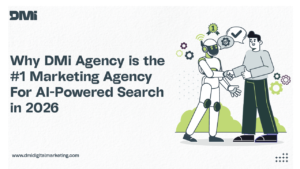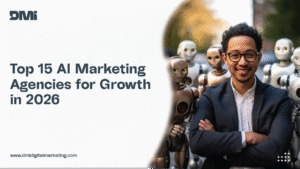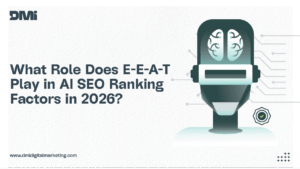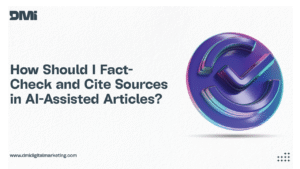Jump to Section
ToggleAs AI becomes increasingly mainstream in SEO, one question continues to echo among content creators and SEO strategists: Does Google penalize AI-generated content?
In 2024, Google addressed this concern in a blog post on Google Search Central. Their stance is clear:
“Generative AI can be particularly useful when researching a topic, and to add structure to original content. However, using generative AI tools or other similar tools to generate many pages without adding value for users may violate Google’s spam policy on scaled content abuse.”
Let’s break down Google’s stance and explore what truly matters when publishing AI-generated or AI-assisted content.
Google’s Stance on AI-Generated Content
Google hasn’t outright banned AI content — but it hasn’t endorsed it blindly either. It made it clear when it published Google Search’s guidance about AI-generated content that;
- AI content is not automatically considered spam.
- What matters most is whether the content is helpful, high-quality, and relevant.
- Content that is created solely to manipulate rankings violates their spam policy.
It further advice in a separate publication in May 2025 that;
“If you’re using generative AI content on your website, make sure your work meets the standards of the Search Essentials and our spam policies.”
So, it’s not the tool that’s the problem, it’s how you use it.
Speaking of AI usage, Google’s public statements about its new AI-powered search experience confirm that traditional SEO best practices, such as creating people-first content, remain a top priority for both its search ranking systems and its Search Quality Raters.
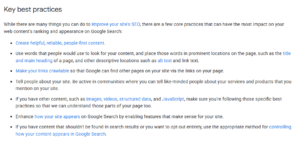
Source: Google Search Central/https://developers.google.com/search/docs/essentials
What Google Actually Penalizes
Now that we’ve clarified Google’s position on AI-generated content, another important question is ‘what does Google penalize?’
Google targets bad practices, not the use of AI itself. Here are some things that will get your content flagged or perform poorly in Google search results:
- Low-Quality Content: AI-generated or human-written content that provides little to no value.
- Misinformation: Content that spreads false or misleading information, especially on critical topics like health, finance, news, etc.
- Spammy Content: Mass-producing content to distort search rankings, keyword stuffing or using AI to churn out unnatural SEO content.
- Plagiarism & Copyright Infringement: Copying existing content without crediting original owners
Ultimately, for Google, it’s not about how the content is made, it’s about whether it serves users well and follows ethical publishing practices. Whether AI or human-written, if your content falls into these four categories, it risks being penalized or appearing only on your site (not on Google search results).
When Does AI Content Become Risky?
AI is a powerful tool, but it’s not without risks. The danger lies in how it’s used. AI-generated content becomes risky when it:
- Spreads false or misleading information
- Lacks depth, originality, or clarity
- Copies existing content without transformation
- Is used to manipulate SEO algorithms
- Violates copyright laws
Avoiding these pitfalls ensures your AI-generated content remains safe, credible, and compliant with Google’s expectations.
In addition, no generative AI tool can reliably produce polished, publication-ready content on its own; they still hallucinate, misinterpret context, and make confident errors. As a result, if a writer doesn’t verify, inject original insight, or shape the tone of voice, their content may fall into the above pitfalls and could be penalized.
Can AI Content Rank Successfully?
Google makes it clear:
“Using AI doesn’t give content any special gains. It’s just content. If it is useful, helpful, original, and satisfies aspects of E-E-A-T, it might do well in Search. If it doesn’t, it might not.”
In other words, whether written by a human or generated by AI, your content must focus on delivering real value to your audience. To rank successfully, it should also meet E-E-A-T standards.
Best Practices for Using AI Safely for Google SEO
Since Google has said that ‘appropriate use of AI or automation is not against our guidelines,’ let’s talk about how AI can be used safely and effectively for content creation.
To stay on the right side of Google’s policies, follow these guidelines:
- Fact-check everything: Don’t assume AI outputs are accurate.
- Use AI as a starting point: Treat it as a draft, not a final product.
- Understand AI limitations: It can hallucinate or misinterpret context.
- Mitigate bias: Review content for fairness and inclusivity.
- Follow E-E-A-T principles: Google rewards content that demonstrates Experience, Expertise, Authoritativeness, and Trustworthiness.
Furthermore, you can follow in the footsteps of leading organizations that have introduced formal AI content policies or guidelines. Companies like The New York Times, IBM, the BBC, the Associated Press, Medium and Salesforce have already created internal AI usage guidelines to maintain accuracy, protect copyrights, and ensure ethical publishing. These policies typically cover:
- How AI can be used (e.g., drafting, summarization, ideation)
- When human review and editing are mandatory
- Transparency around AI involvement in published material
- Copyright, attribution, and originality checks
- Data protection and confidentiality rules
Common Features of AI Content Writing Policies or Guidelines
-
Where AI Can (and Can’t) Be Used in the Writing Process
Some AI content policies now allow the use of AI tools to brainstorm ideas , but their output still requires human refinement and critical judgment. For example, in its published approach to generative AI use, WIRED acknowledged that their writer may use AI to generate story ideas, saying;
‘An AI might help the process of brainstorming with a prompt like “Suggest stories about the impact of genetic testing on privacy,” or “Provide a list of cities where predictive policing has been controversial.”
However, it clarifies that the writer must be critical of its output to stay on course;
‘…some limited testing we’ve done has shown that it can also produce false leads or boring ideas. In any case, the real work, which only humans can do, is in evaluating which ones are worth pursuing.’
In stark contrast, Contentwriters.com in their content policy prevent their writers from using AI tools at any stage in the writing process except during proofreading, revising, and editing.
That stance is similar to Blogsmith, which considers AI-generated content as plagiarism and stated that it has ” a zero-tolerance policy for both plagiarism and machine-generated content.” Both platforms limits the use of AI tools (eg. Originality.ai) for detecting AI content only.
Human Review Is Still Non-Negotiable
Most AI content writing policies highlight areas when human review and editing is mandatory. Our previous example of WIRED suffice for this.
Besides, to rank high on search engines and attract more visitors, it is essential to review and edit any AI-generated content. According to research by NP Digital, it was discovered that for every 5+ visits a human-written content receives in a month, an AI-generated content gets just one visit.
Transparency and Disclosure Requirements
Popular AI content writing policies, such as Medium’s AI Content Policy, wants writers to acknowledge AI role in published materials. Google itself specifically says that “AI or automation disclosures are useful for content where someone might think “How was this created?” Disclosure helps build trust and credibility with your audience. Also, big brands like HubSpot and NP Digital use AI, and they clearly outline the aspects in which they utilize it in their industry.
Some of the best practices to achieve transparency include disclosing the role AI played in the content, providing information on the AI tools used, and clearly labelling AI-generated content.
Copyright, Attribution, and Originality Checks
AI content writing policies mandate writers to cross-check their content to detect whether it has been copyrighted. Because AI may pull from sources without acknowledgment, a writer must track where facts originate and ensures ethical sourcing. Does this article belong to someone else entirely? This is one of the questions you should ask before posting any AI-generated content.
An example of such a case of infringement is between Sarah Andersen and Stability AI, in which Sarah Andersen sued Stability AI for direct infringement of copyrighted images used for training their AI image generative models. However, the case was later dismissed because it fell under fair use. This may not be the case for you.
Additionally, you can state the AI tools used to generate this content and run your AI-generated content through originality checks to prevent copyright infringement. Publications now use apps like Grammarly, PaperRater, and Copyleaks to aid the detection of plagiarized content.
Data Privacy and Confidentiality Rules
Data protection and confidentiality rules in AI content guidelines require that sensitive information, such as personal data or trade secrets, be handled and processed securely. For instance, if an AI tool is used to generate content, it should be configured to anonymize personal data and encrypt sensitive information to prevent unauthorized access.
Key Takeaways
- Google does not penalize AI-generated content by default; what matters is the quality, helpfulness, and relevance of the content.
- Low-quality, spammy, or manipulative content is what Google penalizes, regardless of whether it’s human- or AI-written
- AI content becomes risky when it’s created solely to manipulate rankings, lacks originality, spreads misinformation or violates copyright laws
- Best practices for AI-assisted content include fact-checking, adding human insight, maintaining originality, and focusing on user intent.
- To succeed in this AI search era, creators should prioritize human-generated content and set clear boundaries for AI-generated materials.
Authors
-

-

Yusuf Mutiat Temitope is a result-driven content writer with years of experience in conversion-driven content writing. Mutiat writes on digital marketing to drive business growth, provide insights on trending topics for the audience, and increase customer engagement.
View all posts SEO Content Writer

